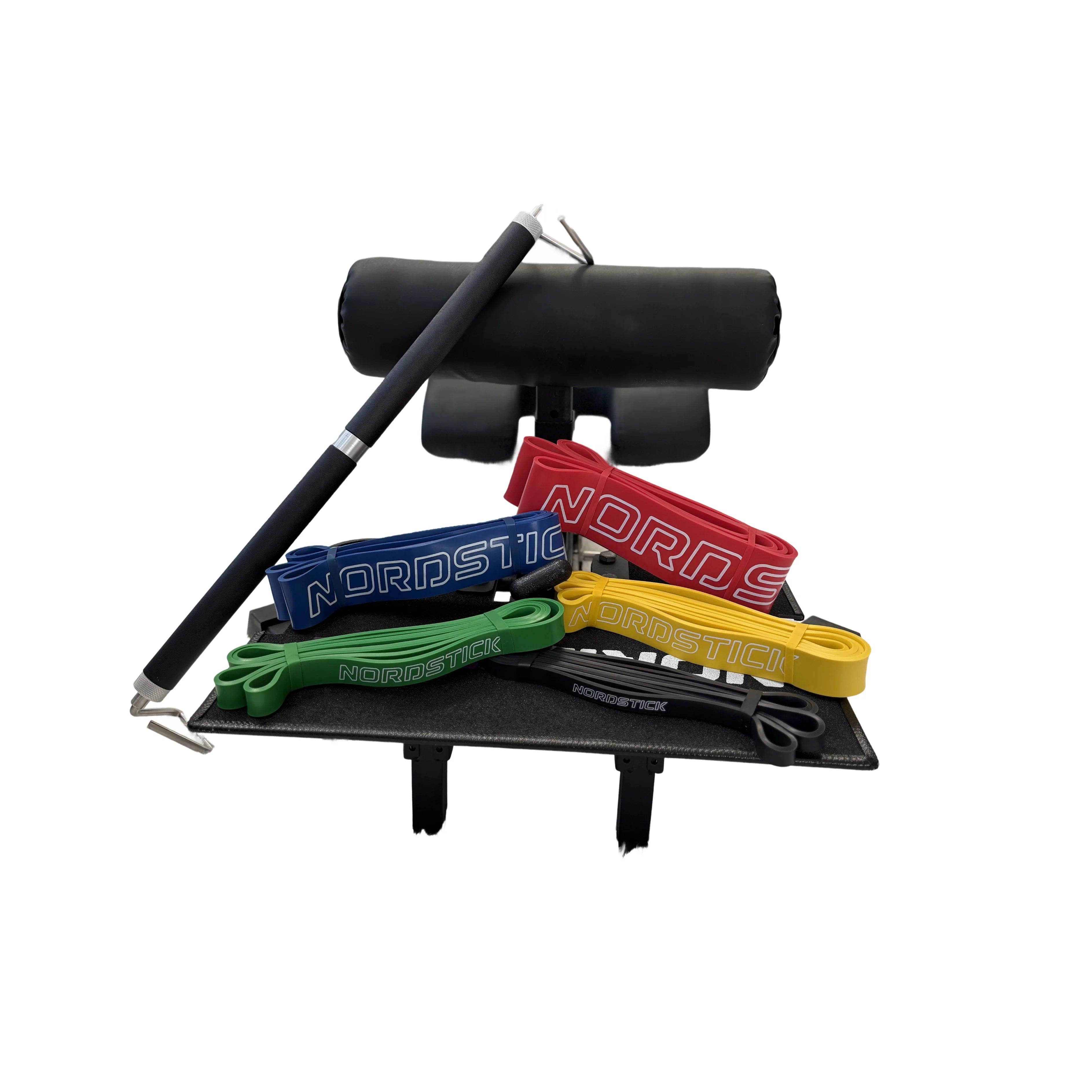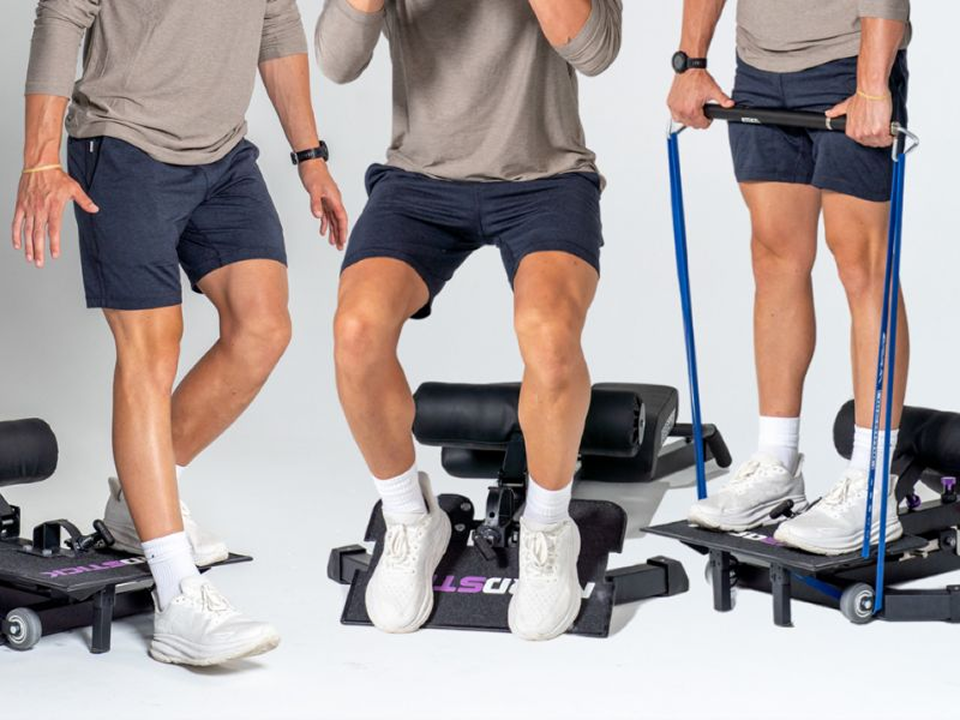Lower back pain is a common ailment affecting millions globally, significantly impacting daily life and overall healthcare. The good news? Strengthening your core and lower back can transform your life, reducing pain and enhancing your ability to enjoy everyday activities. Based on the Back to Strength program by Dr. Garrett Drumheller, PT, DPT, SCS, CSCS, this guide outlines five simple exercises designed to fortify your lower back and stomach muscles. This isn't just about temporary relief; it's about building a foundation for a stronger, more resilient body.
DOWNLOAD THE FULL BACK TO STRENGTH PROGRAM FOR FREE HERE
Before diving into the exercises, remember that consistency is key to seeing results. Also, consult a healthcare professional before starting any new exercise regimen, especially if you're experiencing significant back pain.
1. Elephant Walks
Why It Helps: Elephant walks target the hamstrings, which play a crucial role in supporting the lower back. Tight hamstrings can lead to increased stress on the lower back, exacerbating pain. By enhancing flexibility in the hamstrings, stretching exercises like this can help alleviate tension, promoting a healthy alignment and reducing the strain on your back.
How to Do It:
-
Stand with your feet hip-width apart. Keep your feet flat on the starting position.
-
Bend at the waist and reach down towards the floor as far as comfortably possible.
-
Keep your knees bent, not locked.
-
Give your hamstrings a gentle stretch. Gently pump your knees forward and back to engage a stretch in your hamstrings.
-
Focus on maintaining a straight line from your head to your tailbone, avoiding rounding the back, which can make pain worse.
2. Single Leg RDL with Kickstand
Why It Helps: This exercise strengthens the back, glutes, and hamstring muscles, critical for supporting the spine and lower back. By engaging these muscles, you can build stability and reduce the risk of low back pain.
How to Do It:
-
Begin in a staggered stance with one foot slightly behind the other, knees bent.
-
Slowly lean forward, reaching toward your toes with your hands, keeping your back straight.
-
Ensure your abdominal muscles are engaged to support your spine.
-
Slowly return to the starting position, focusing on the contraction of your glutes and hamstring of the front leg. Alternate this exercises between your left leg and right.
3. Back Extension with the Nordstick + Yoga Ball
Why It Helps: This exercise specifically targets the lower back muscles, strengthening them to provide better support for the spine. A strong lower back is essential for preventing and alleviating pain, as it supports proper posture and spinal alignment.
How to Do It:
-
Make sure you keep your feet flat and secured on the Nordstick for stability.
-
Slowly roll a yoga ball under your thighs, lying face down.
-
Place your hands behind your head or across your chest.
-
Slowly lift your upper body off the ball, keeping your neck in line with your spine.
-
Slowly lower back down after a brief pause at the top.
-
This movement should be controlled and deliberate, focusing on the muscles along your spine.
4. Yoga Ball Sit-Ups
Why It Helps: Core strengthening exercises like yoga ball sit-ups engage the abdominal and back muscles, crucial for supporting the lower spine. Strong abdominal muscles reduce the burden on the lower back, mitigating pain and improving posture.
How to Do It:
-
With your feet secured by the Nordstick, position the yoga ball under your lower back.
-
Cross your arms over your chest or place them behind your head.
-
Slowly lift your upper body towards your knees, keeping your feet flat and knees bent.
-
Lower back down to the starting position, focusing on engaging your core muscles throughout the movement.
5. Hip Thrust with Yoga Ball
Why It Helps: Hip thrusts strengthen the glutes and hamstrings, both of which are vital for supporting the lower back and maintaining proper posture. Strong glutes ensure the load is evenly distributed when you move, preventing overreliance on the lower back muscles.
How to Do It:
-
Secure your feet and position the yoga ball under your upper back, lying face up.
-
Ensure your knees are bent, and feet are flat on the floor.
-
Push through your heels to lift your hips towards the ceiling, forming a straight line from your shoulders to your knees.
-
Lower back down slowly, focusing on engaging your glutes and hamstrings.
Get the Whole Lower Back and Core Workout in One Easy-to-follow Program
DOWNLOAD THE FULL BACK TO STRENGTH PROGRAM FOR FREE HERE
Key Takeaways
Incorporating these exercises into your routine can significantly contribute to relieving and preventing lower back pain. Remember, the journey to a stronger back and core is a marathon, not a sprint. Dedication and consistency are your best allies.
If you're unsure about any exercise or if your pain worsens, stop immediately and consult a physical therapist or other healthcare professional. For personalized guidance, Dr. Garrett Drumheller is available at garrett@thenordstick.com, ready to assist you on your path to strength and recovery.
In summary, these exercises for lower back pain are not just movements but steps towards reclaiming the joy in everyday activities. By strengthening your core and back muscles, you're not just alleviating pain; you're enhancing your quality of life, one exercise at a time. Remember, a stronger back leads to a brighter future.
Lower Back Pain FAQs
Does Walking Help with Lower Back Pain?
Yes, walking can be incredibly beneficial for those suffering from lower back pain. It's a low-impact exercise that doesn't strain or stress the lower back. Instead, walking promotes blood flow to the spinal structures and improves flexibility and posture, key components in alleviating pain and enhancing spinal health. Moreover, maintaining a healthy weight through walking can also reduce the pressure on the spine, further contributing to pain relief. When walking, keep your pace gentle and steady, ensuring your posture remains upright with your shoulders back and down, engaging your core to support your lower back.
What Not to Do with Lower Back Pain
When experiencing lower back pain, certain activities and postures should be avoided to prevent exacerbating the condition:
-
Avoid Heavy Lifting: Lifting objects that are too heavy can strain your back muscles, making the pain worse.
-
Steer Clear of Poor Posture: Sitting or standing with poor posture for extended periods can increase back pain.
-
Don't Ignore the Pain: Continuing activities that worsen your pain can lead to further injury. Listen to your body and rest when needed.
How Do You Get Rid of Lower Back Pain Fast?
While there's no one-size-fits-all quick fix for lower back pain, several strategies can help alleviate pain more swiftly:
-
Apply Heat or Ice: Heat can relax muscles and improve blood flow, while ice can reduce inflammation and numb the pain. Use for 15-20 minutes at a time.
-
Perform Gentle Stretching Exercises: Incorporate gentle stretching exercises, like the knee-to-chest stretch or lower back rotational stretch. To perform the knee-to-chest stretch, lie on your back with your knees bent and feet flat on the floor. Slowly bring one knee towards your chest, holding it with your hands, then slowly round your spine to feel a gentle stretch. Repeat with the other leg.
-
Stay Active: Gentle activities like walking or swimming can help. Avoid staying in one position for too long.
-
Consider Over-the-Counter Pain Relievers: Nonsteroidal anti-inflammatory drugs (NSAIDs) can reduce muscle soreness and inflammation. However, they should be used cautiously and for short durations.
Incorporating these strategies into your recovery plan, alongside the exercises recommended from the Back to Strength program, can provide comprehensive support for managing lower back pain. Always remember, the key to effective relief lies in understanding the causes of your pain and addressing them through a combination of strength, flexibility, and lifestyle adjustments. If your pain persists or interferes with your daily activities, seeking advice from a physical therapist or healthcare professional is crucial to receive personalized care and guidance.









































Leave a comment
This site is protected by hCaptcha and the hCaptcha Privacy Policy and Terms of Service apply.